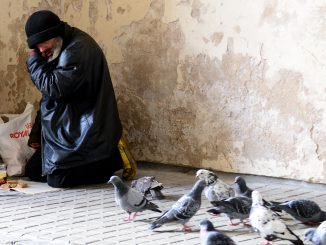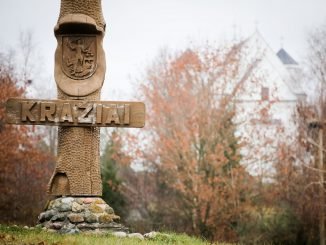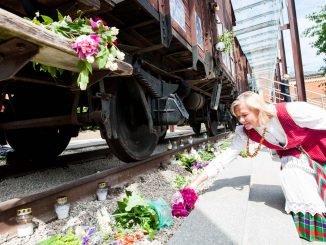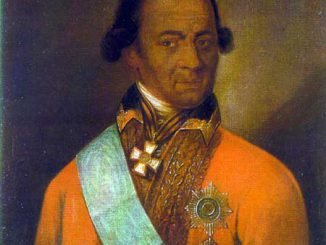
Archbishop Matulionis’ sarcophagus to be brought to Vilnius for beatification
The sarcophagus with Teofilius Matulionis‘ remains will be solemnly placed in Vilnius Cathedral on Saturday evening, on the eve of his beatification. […]

The sarcophagus with Teofilius Matulionis‘ remains will be solemnly placed in Vilnius Cathedral on Saturday evening, on the eve of his beatification. […]

The Jewish Community of Lithuania suggests establishing a cultural museum in the territory of the former Vilnius ghetto, going beyond a single building to open spaces and employing smart technologies. […]

Kazys Skirpa (1895 – 1979) was the head of the Lithuanian Activist Front (LAF) and whom in 1941 rebels declared the prime minister of an independent Lithuania. It is worth reading and making known a […]

In popular historical Lithuanian literature of the 17th and 18th century, there was a corporation of beggars that existed in Vilnius called the “beggars’ guild.” In pursuing historical exoticness and sensation, this name has been […]

After another May passed placing a flower crown placed near the monument commemorating those that had perished during Lithuania’s road to freedom, with the before mentioned action the Russian ambassador to Lithuania Alexander Udaltsov raised quite a few eyebrows: could the denier of Lithuania’s occupation, Moscow have changed its mind and is finally admitting the historic fact with all of its potential consequences? The newest interview with the Russian Ambassador to Lithuania dispelled such hopes. […]

Lithuania’s Foreign Minister Linas Linkevičius has dismissed as absurd the statements by Russian Ambassador Alexander Udaltsov about Russia’s right to demand 72 billion US dollars in compensation for the Soviet Union’s Soviet-era investments. […]

Catherine Willaughby, the Duchess of Suffolk (1519/1520-1580) and her second husband Richard Bertie (1517-1582), who were closely tied to England’s royal family, lived in the town of Kražiai, not far from Kelmė, from the middle of 1557 to March 1559. As a faithful Protestant, she later became a hero, with ballands, plays and films made about her. […]

Quarters comprising of several streets that were designed along religious, ethnic or professional lines were a regular way of life in European cities during the Middle Ages. Thus the settling of Jews, who employed the use of a section of the city that was delegated to them by law did not go counter to the pattern that had developed for settling in cities. Orthodox believers, Germans, Jews, butchers, glass makers and others who established themselves in Great Duchy of Lithuania (GDL) cities divided up living space in a similar manner. Thus Jews brought traditions to the GDL that were typical for them in the quarters they lived, traditions that coincided with other trends that managed to express themselves in GDL cities. […]

A plan of the Operation Priboi, the code name for a mass deportation of the Lithuanian population by the Soviets in 1949, has been granted the status of a document of national importance and listed in Lithuania’s national Memory of the World Register. […]

Algirdas Brazauskas is considered the president of Lithuania who has made the biggest contribution for the country, shows a poll carried out by Spinter Tyrimai (Spinter Surveys) company for the news portal delfi.lt. […]

A bearded, long haired man with an austere face that is depicted by a 12 cm bronze sculpture is the most famous archeological find over the last 150 years, which made Kernavė famous. The man’s nakedness is covered with a cloth kerchief which is draped over his right hand and turned over hi s hips. We see an object of unclear origins in his elevated left hand that is decorated with wavy lines; in his right hand, the man is also holding something, however only a hole in the hand remains. There is a vertical hole one and a half centimeters in diameter in the sculpture. By the middle of the 19th century, they believed that they’d found in Kernavė, a sculpture of the pagan god of Thunder, Perkūnas. […]

The founding myth of Vilnius has many affinities with legends of Rome and other great cities. Though hardly historically accurate, it was necessary to legitimize the royal seat of a medieval grand duke. […]

Lithuania remained pagan until the late Middle Ages and, as such, was an object of curiosity as well as hostility for Christian Europe. Paganism, wrote thirteenth-century Franciscan scholar Bartholomew the Englishman, was “ritus mirabilis”. Christian scholars who described pagan rituals did not shy away from negative stereotyping, although sometimes their writings give neutral, almost ethnographic descriptions.
To read this article, try a €5.99 monthly subscription by clicking here. […]

In the historic part of Vilnius, on Didžioji Street, there stands the Orthodox Church of Saint Paraskeva, one of the finest examples of nineteenth-century Byzantine style architecture in the Lithuanian capital.
To read this article, try a €5.99 monthly subscription by clicking here. […]

History is a powerful tool and sixteenth-century Lithuanian noble houses were only too happy to ground their contemporary power in a historical myth which traced their ancestry to Ancient Rome.
To read this article, try a €5.99 monthly subscription by clicking here. […]

On the evening of 13 January 1991, journalist Eglė Bučelytė was broadcasting from the Lithuanian Radio and Television studio in Vilnius when Soviet paratroopers broke into the building to cut off her live broadcast. With the approach of that significant day’s 25th anniversary, Bučelytė spoke to Delfi about her experiences. […]
Copyright © 2024 | MH Magazine WordPress Theme by MH Themes